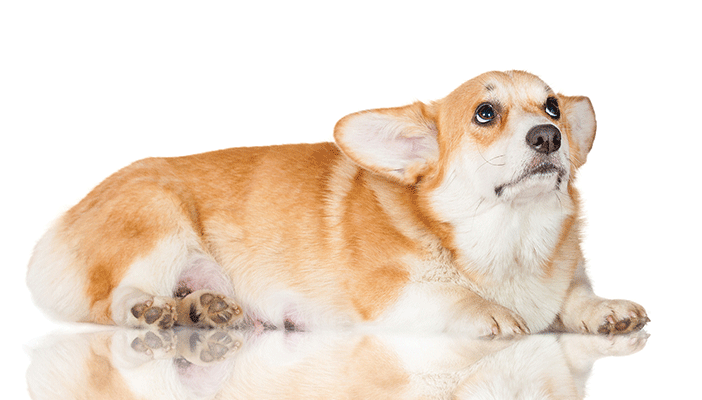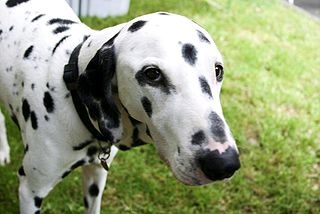
Dog hives are a severe allergic reaction that usually appears on your dogs skin within thirty minutes and if left to heal on its own can disappear in about twenty four hours. The problem for many pet owners is that hives on dogs are extremely irritating for your pet, and he will stop at nothing to try and bite and scratch those small red bumps until the itching subsides.
If your dog is allowed to keep scratching he will eventually cause the hives to break and bleed, which can cause a severe skin infection. We are going to discuss how to diagnose hives in dogs, then how to treat dog hives, and finally how to prevent them from recurring.
How to Diagnose Hives in Dogs
 Hives in dogs are small reddish circular bumps on the skin. The hives have a raised appearance similar to what you would get from a rash. When these hives appear on the surface of your dogs skin, the fur will be slightly raised near the infection. That is a quick way to locate the rash if your dog has very thick fur. The hives cause extreme discomfort and you will notice that your dog is biting or scratching the area to relieve the pain. You want to pay extra attention if you see your dog scratching at the same area because if he is left to tear away at these hives, they will eventually rip open and bleed. This is not a good situation because the hives will ultimately become a severe skin infection, and the discomfort will last significantly longer.
Hives in dogs are small reddish circular bumps on the skin. The hives have a raised appearance similar to what you would get from a rash. When these hives appear on the surface of your dogs skin, the fur will be slightly raised near the infection. That is a quick way to locate the rash if your dog has very thick fur. The hives cause extreme discomfort and you will notice that your dog is biting or scratching the area to relieve the pain. You want to pay extra attention if you see your dog scratching at the same area because if he is left to tear away at these hives, they will eventually rip open and bleed. This is not a good situation because the hives will ultimately become a severe skin infection, and the discomfort will last significantly longer.
To try and identify how your dog got the hives, you need to carefully trace back the last few hours and see if anything different happened with your dog. Was he left alone in the backyard for a significant amount of time. Bee stings in dogs account for many of the hives breakouts. If your dog is allergic to the bee or wasp venom, he will breakout in hives very quickly. It is very important in this situation to pay very close attention to your dogs demeanor. If he begins to exhibit significant signs of distress, like heavy breathing, increased howling, uncontrolled urination or faints, you need to rush your dog to a veterinarian hospital immediately. Your dog is experiencing a severe allergic reaction and needs medical attention before this becomes a fatal situation. If you have diagnosed the hives are just a discomfort for your dog, here are some ways to treat hives on dogs with supplies you already have in your home.
How to Treat Hives on Dogs
A dog with hives is a very unhappy pooch. The hives are brought on by a certain allergen, and removing that allergen will go a long way in reducing the amount of stress and pain your dog is experiencing right now. Since the hives appear almost minutes after the body comes in contact with the allergen, it is vital to identify what happened different today in your dogs routine. Did you just give him a bath with a new type of soap, was he just at the veterinarian and received a vaccine, did you just have your lawn treated with a pesticide or has your dog gotten stung by an insect. If you can identify the source of the reaction you can help treat the hives and possibly ensure that they do not occur in the future.
One of the simplest ways to give your dog some comfort is to just give him in a cold bath. The cold water will relieve some of the discomfort and if he did come in contact with something on his skin the water will wash it away. If you can not get him into a bath, simply running the garden hose over him and the infected area for ten minutes will go a long way in helping to make your dog a little more comfortable. Once you feel you have run enough water over his hives, you can apply some home remedies that will aid in the pain and lessen his desire to scratch. You can make little paste like solutions from baking soda, aloe vera, witch hazel and even green tea. Applying these compounds directly onto the hives will lessen the desire to scratch at them, and allow the hives to heal on there own in a short period of time.
Many dog owners not only want to eliminate the source of the pain, they want to calm down their dog with use of over the counter medications. These are simply for relaxing the dog and give him the ability to get some rest while the healing process works on the hives. Benadryl, Sucralfate and Cortisone are for providing a little added comfort and are not specifically designed for the treatment of hives. These will ensure he gets a little sleep during this very stressful time.
How to Prevent Hives in Dogs
You have diagnosed what hives are and you have treated your dog for the irritation brought on by the hives, now it is time to try and prevent them from recurring in the future. If you can identify the cause of the allergic reaction you can most definitely work to prevent the outbreak from happening again. Many times if you were able to conclude a new pet food has caused the hives, then you can consult with your veterinarian and they will discuss alternative options for his food. If you were able to figure out the chemicals in your lawn are affecting your dog, you can switch to an all organic type of treatment. If bees and wasps are the problem, fencing in areas and keeping your pet from that area will go a long way to ensure he doesn’t have an outbreak again.
The key to dealing with hives in dogs is to closely monitor your dog. The hives outbreak occurs within minutes of the allergen entering your dog, and that allows you the opportunity to quickly trace back what happened differently and act accordingly. With simple home remedies you can relieve your dogs discomfort and when you figure out the source of the infection, you can prevent it from happening again. Hives in dogs can be a most uncomfortable experience for your dog, these remedies and treatments we discussed should help in making that time pass quickly.













